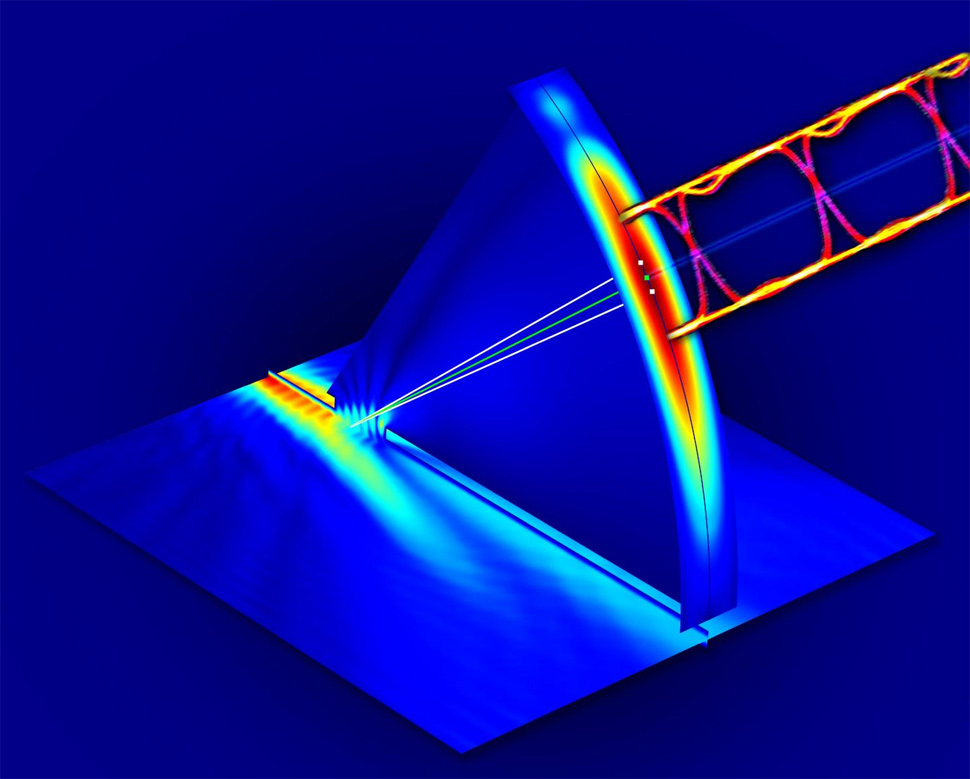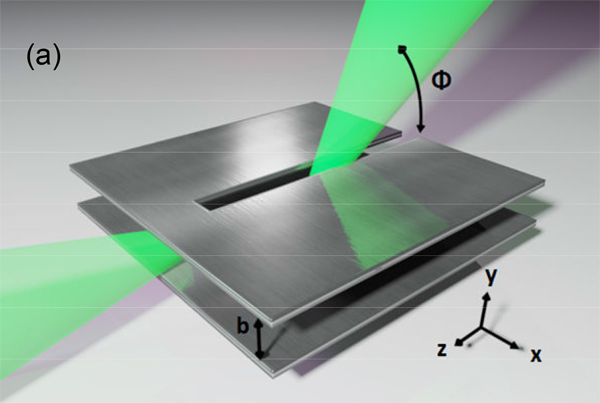
14th August 2017 100 times faster Wi-Fi may soon be possible Researchers at Brown University report the transmission of data through a terahertz multiplexer at 50 gigabits per second, which could lead to a new generation of ultra-fast Wi-Fi.
Multiplexing, the ability to send multiple signals through a single channel, is a fundamental feature of any voice or data communication system. A team of researchers has now demonstrated a method for multiplexing data carried on terahertz waves – high-frequency radiation that could enable the next generation of ultra-high bandwidth wireless networks. Writing in the journal Nature Communications, they describe the transmission of two real-time video signals through a terahertz multiplexer at an aggregate data rate of 50 gigabits per second, 100 times the optimal data rate of today's fastest cellular network. "We showed that we can transmit separate data streams on terahertz waves at very high speeds and with very low error rates," said Daniel Mittleman, professor in Brown's University's School of Engineering and the paper's corresponding author. "This is the first time anybody has characterised a terahertz multiplexing system using actual data, and our results show that our approach could be viable in future terahertz wireless networks." Current voice and data networks use microwaves to carry signals wirelessly. But like most forms of information technology, the demand for data transmission is growing exponentially, and quickly becoming more than microwave networks can handle. Terahertz waves have higher frequencies than microwaves and therefore a much larger capacity to carry data. However, scientists have only just begun experimenting with terahertz frequencies and many of the basic components needed for such communication don't exist yet. A system for multiplexing and demultiplexing (also known as mux/demux) is one of those basic components. It's a technology that allows one cable to carry multiple TV channels, or hundreds of users to access a Wi-Fi network.
The mux/demux approach Mittleman and his colleagues developed uses two metal plates placed parallel to each other to form a waveguide, as shown in the illustration below. One plate has a slit cut into it. When a terahertz wave travels through the waveguide, some of the radiation leaks out of the slit. The angle at which radiation beams escape is dependent upon the frequency of the wave. "We can put several waves at several different frequencies – each of them carrying a data stream – into the waveguide, and they won't interfere with each other because they're different frequencies; that's multiplexing," Mittleman said. "Each of those frequencies leaks out of the slit at a different angle, separating the data streams; that's demultiplexing." Due to the nature of terahertz waves, signals in terahertz communications networks will propagate as directional beams, not omnidirectional broadcasts like in existing wireless systems. This directional relationship between propagation angle and frequency is key to enabling mux/demux in terahertz systems. A user at a particular location (and therefore at a particular angle from the multiplexing system) will communicate on a particular frequency.
In 2015, Mittleman's team first published a paper describing their waveguide concept. For that initial work, they used a broadband terahertz light source to confirm that different frequencies did indeed emerge from the device at different angles. While that was an effective proof of concept, this latest work took the critical step of testing the device with real data. The team encoded two high-definition television broadcasts, beamed together into the multiplexer system. Their experiments showed that transmissions were error-free up to 10 gigabits per second, which is much faster than today's standard Wi-Fi speeds. Error rates increased somewhat when the speed was boosted to 50 gigabits per second (25 gigabits per channel), but were still well within the range that can be fixed using forward error correction, which is commonly used in today's communications networks. The researchers plan to continue developing this and other terahertz components. Mittleman recently received a license from the FCC to perform outdoor tests at terahertz frequencies on the Brown University campus. "We think that we have the highest-frequency license currently issued by the FCC, and we hope it's a sign that the agency is starting to think seriously about terahertz communication," he said. "Companies are going to be reluctant to develop terahertz technologies until there's a serious effort by regulators to allocate frequency bands for specific uses, so this is a step in the right direction." ---
Comments »
|









